Digital to the original
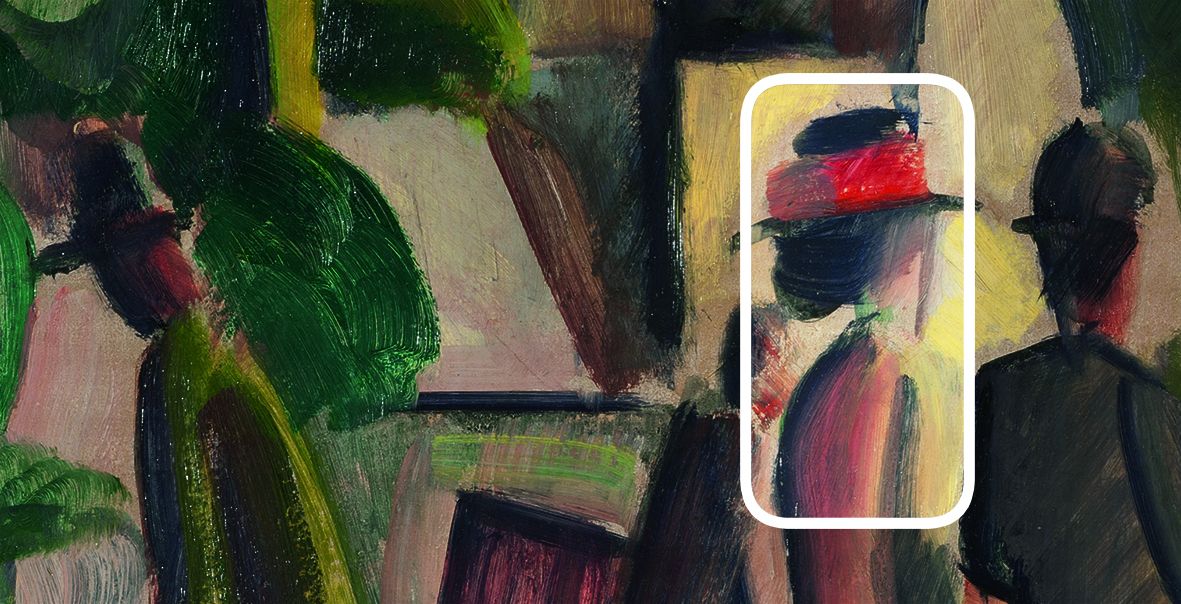
Finde deinen Zugang!
How can digital strategies broaden the view of artworks and artifacts of cultural history? The Clemens Sels Museum Neuss is meeting this challenge by creating new digital paths for the public. Highlights from the museum's own collection are presented across epochs and genres and supplemented by multimedia access. Content can be individually experienced beyond what is presented. Digital and interactive formats are offered in which the creative and playful aspects are integrated. Experiment with digital light painting or draw with the help of augmented reality.
You can find out more about our digital game here:
Whether inclusive guides, encounters in digital space or listening and viewing adventures - the collection is turned into an experience. Find your access!
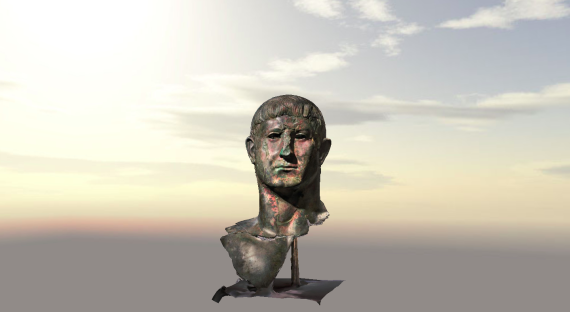
Learn how to create a digital replica.
The bronze head of Lucius Cornelius Pusio in the Museo Nazionale Romano in Rome is one of the most important archaeological finds associated with Roman Novaesium. The bust represents the oldest known portrait of a resident of Neuss and the Roman province of Lower Germania.
Until now, making copies of archaeological finds has been a lengthy and conservationally problematic process. However, in order to make the head of Pusio accessible to you, we have tested a new innovative procedure for the presentation of archaeological finds in cooperation with the Archaeological Institute of the University of Cologne and created a virtual model of the bust using a 3D scanner.
This makes the find accessible as a virtual reconstruction on the screen and as a real 3D copy.
Create a new virtual environment for our animal sculptures!
You have several options to get creative with the so-called "Tagtool": You can edit the environment of the three exhibited sculptures by Adam Zegadlo like a collage or digitally paint objects and landscapes yourself.
In this way, the works appear in a completely new light and there are no limits to your imagination. Whether animated butterflies or idyllic landscapes: create your very own, new world!

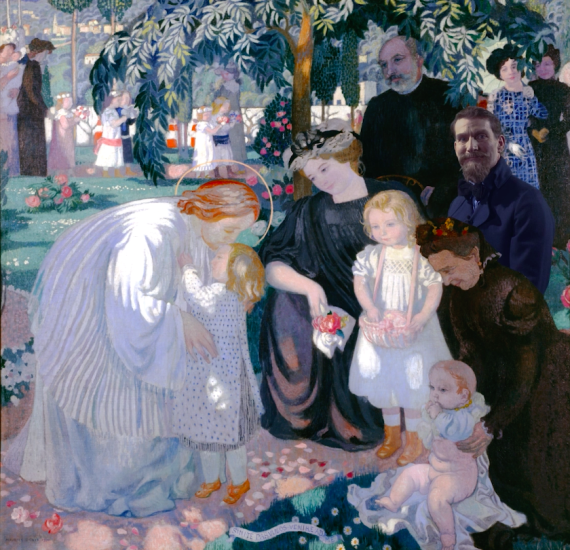
Listen to what the people in the picture have to tell you!
What would pictures tell you if they could speak? Here, in collaboration with the Rheinisches Landestheater Neuss and under the direction of in-house author Olivier Garpfalo, three paintings were "brought to life".
The protagonists are actors from the Rheinisches Landestheater Neuss. On screens, they report on the history of the paintings' creation, on the respective artist and on the time in which they were painted.
Draw your own picture!
In this room of our current exhibition, discover the high-caliber prints in our collection, some of which have never been shown before, and trace them using augmented reality (AR).
AR is a computer-based augmentation of reality. Using this technology, it is possible to project the shape contours of Franz Marc's "Animal Legend" (1912) or any other print in our exhibition onto a blank paper via the display. This way you can trace our wonderful graphics or use them as inspiration for a drawing of your very own.

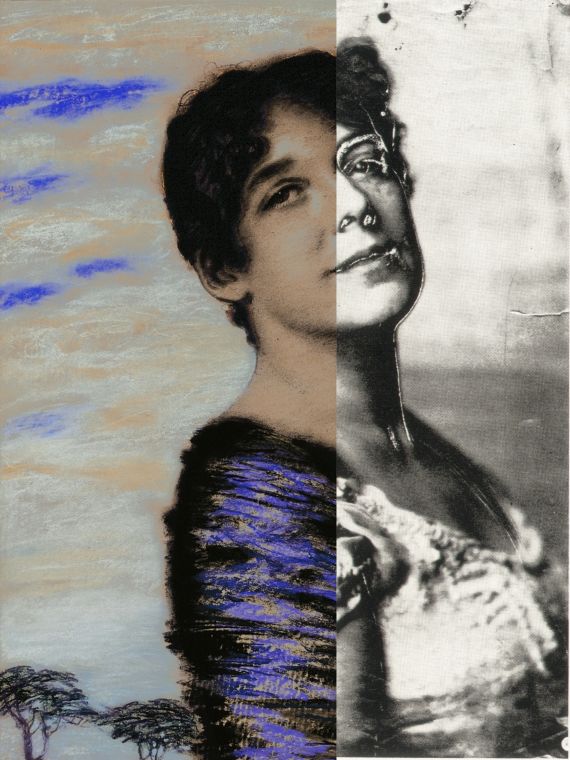
What was the inspiration for Franz von Stuck's painting?
The model for this work was a photograph. Through residues on this photograph - for example, from carbon paper - the technique of tracing can be documented. Thus, this particular painting moves between photographic and painterly aesthetics.
Despite the compositional influence of the photographic model, the supra-temporal idealization is readily apparent. Mary's face is even and her gaze expressive. Also the - compared to the photograph - higher closed décolleté is due to the paternal idealization.
What would your perfect still life look like?
For centuries, still lifes were compositional studies on which artists tested painting techniques and composition. The deliberate arrangement of objects followed certain principles of order and design. Through the selection of the objects, the content of the picture was also charged with symbolism. Not only the painting technique was subject to the trends of the respective epoch, but also the choice of objects changed in the course of time.
Let yourself be inspired by our exhibits and think about what will be on the table in your personal still life!
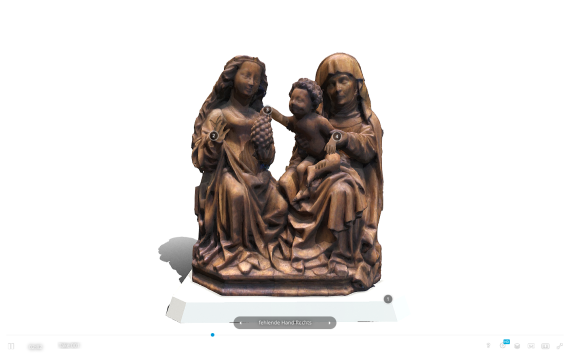
Some works of art in our museum are no longer preserved in their original state for various reasons. In order to show missing parts or originally conceived use functions of the exhibited sculptures, they are completed again with the help of augmented reality.
A small foretaste: In order to reconstruct the kneeling youth by George Minne in AR as it was originally intended, the two media artists Sean Fortune and Frederic Printz were on the road in the beautiful Museum Folkwang and scanned the fountain by Geroge Minne. Thank you for this opportunity!
Audio guides have long been a standard part of museum art education. Since, in addition to information about the work and the artist, much more can be conveyed through the ear, elementary school students have set individual works of art and artifacts of cultural history to music.
Our short audio teaser for the work example "Promenade in Brown and Green" by August Macke from 1913 shows the influence that auditory impressions such as birdsong can have on the perception of and access to works of art.
In the context of the upcoming exhibition, sound images have been created that you can listen to via QR codes. In order to give as many people as possible access to art, this station also includes sign language video descriptions of the images.

Foto: Carsten Gliese

Glamour, fashion and pop culture - long before the flood of images on social media, paper dress-up dolls brought the glamor of European royalty or the Hollywood dream factory into the home.
Prominent representatives of the leisure culture of the early 20th century and the typical American teenage cult still celebrated today in film and television, through to the world of film stars and style icons such as Marylin Monroe, Jackie Kennedy, Elizabeth Taylor, Rock Hudson or Twiggy:
All of them were available as dress-up dolls.
As toys and also as conveyors of current fashion trends, paper dolls could be outfitted with clothes, hats and accessories. Style the figures according to your own ideas and create your favorite look.
Take a look at what Neuss used to look like!
Works of art are not the only evidence of bygone eras. The postcard, introduced in Germany in 1870, was also a popular and widespread medium on which sights and city views were recorded.
The classic picture postcard was usually adorned with a black-and-white photograph of popular motifs, which in some cases were recolored by hand. Postcards not only provided the addressee with information about the place the sender had visited, but also conveyed his or her greetings.
Many greeting cards with representative city motifs were also sent from Neuss. From the large collection of the Rabe Collection you will see a selection of the most beautiful Neuss motifs with a digital superimposition of today's photographs. This makes changes in the cityscape visible with a leap in time.

